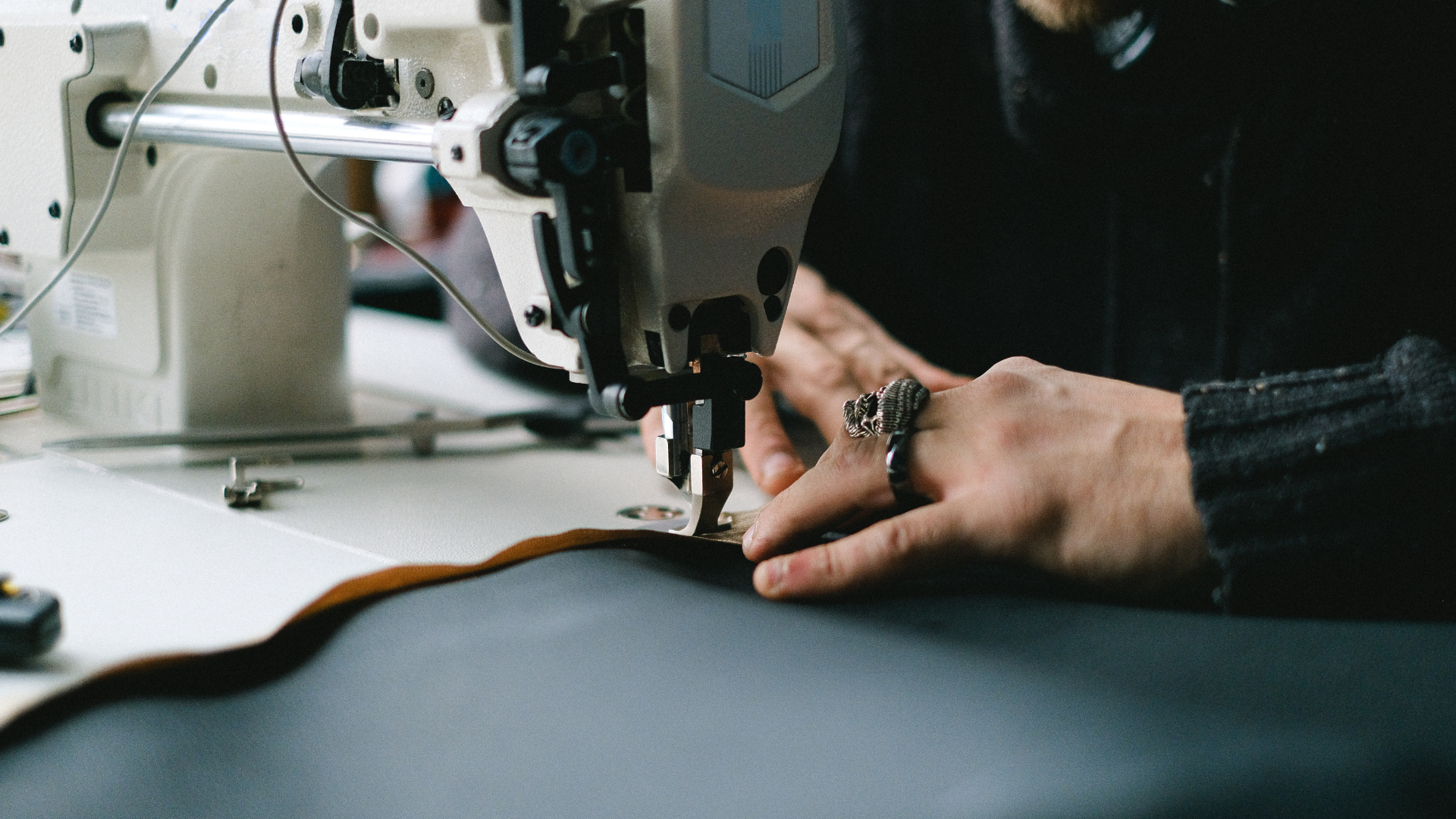
Tailoring is an art that transforms simple fabrics into well-fitted, stylish garments that enhance your look and boost your confidence. However, even experienced tailors can sometimes make errors that affect the quality and fit of the final product. Understanding Common Tailoring Mistakes and How to Avoid Them is crucial for delivering impeccable results every time.
In this blog post, we’ll explore Common Tailoring Mistakes and How to Avoid Them, providing actionable tips to help you steer clear of these errors, ensuring that your creations are always flawless.
1. Incorrect Measurements: The Root of All Tailoring Problems
One of the most fundamental and Common Tailoring Mistakes and How to Avoid Them is taking incorrect measurements. Even a small error in measuring can lead to a garment that fits poorly, making it uncomfortable and unflattering. Accurate measurements are the foundation of any well-tailored piece, so it’s essential to get this step right.
How to Avoid It:
- Double-check Your Work: To ensure accuracy, measure twice at all times. Later on, this can help you avoid making expensive mistakes.
- Use a Proper Measuring Tape: Use only a flexible measuring tape made specifically for tailoring. This guarantees consistent and accurate measurements.
- Understand the Client’s Body: Everybody is different. Consider the client’s posture, body types, and any particular preferences they may have.
- Measure in Inches or Centimeters, Not Both: To prevent confusion and errors, use the same unit of measurement the entire time.
2. Poor Fabric Choice: A Mistake That Can Ruin Your Project
Choosing the wrong fabric for a design is one of the Common Tailoring Mistakes and How to Avoid Them. Some fabrics are better suited for certain styles than others and failing to account for this can lead to a garment that doesn’t hang or drape as intended.
How to Avoid It:
- Understand Fabric Properties: Know the difference between fabrics like cotton, silk, wool, and synthetics, and understand how each behaves in different designs.
- Consider the Garment’s Purpose: The function of the garment should influence your fabric choice. For example, heavy fabrics are not ideal for summer wear, while lighter fabrics may not provide enough structure for tailored suits.
- Test the Fabric: Before cutting, drape the fabric on a mannequin or pin it to see how it falls. This can give you a good idea of whether it will work for your intended design.
3. Ignoring Grainlines: A Subtle Mistake with Big Consequences
One of the Common Tailoring Mistakes and How to Avoid Them is cutting patterns against the grain. The grainline of a fabric refers to the direction in which the fabric is woven, and ignoring this can lead to garments that twist, stretch, or hang incorrectly.
How to Avoid It:
- Mark the Grainline on Patterns: Always mark the grainline on your patterns and ensure they align with the fabric’s grain before cutting.
- Check Twice, Cut Once: Before you cut, double-check that your pattern pieces are correctly aligned with the grainline. This small step can save you from big problems later.
- Educate Yourself on Grainline Importance: Understanding why grainlines matter will reinforce the habit of checking them. It’s crucial for ensuring that your garments maintain their intended shape and fit.
4. Rushing the Fitting Process: A Shortcut That Leads to Setbacks

Rushing through fittings is another of the Common Tailoring Mistakes and How to Avoid Them. A proper fit is essential, and trying to speed through this process can lead to a garment that doesn’t fit the client well, resulting in dissatisfaction and potentially costly alterations.
How to Avoid It:
- Schedule Multiple Fittings: Don’t try to achieve the perfect fit in one session. Schedule at least two or three fittings, especially for complex garments.
- Listen to the Client: During fittings, listen carefully to your client’s feedback. Their comfort and satisfaction are paramount, so adjust the fit accordingly.
- Take Your Time: Ensure that each fitting is thorough. Make all necessary adjustments, and don’t rush through this process to save time.
5. Overlooking Seam Allowances: A Small Oversight with Big Impact
Seam allowances are crucial in tailoring, and overlooking them is one of the Common Tailoring Mistakes and How to Avoid Them. Without proper seam allowances, you limit your ability to make necessary adjustments, which can affect the garment’s fit and durability.
How to Avoid It:
- Include Ample Seam Allowances: Always add seam allowances to your patterns. Typically, a ½ inch to 1 inch allowance is sufficient, but this can vary depending on the fabric and garment type.
- Mark Seam Lines Clearly: Clearly mark the seam lines on your fabric before sewing. This ensures that you’re sewing at the correct distance from the edge.
- Leave Extra for Adjustments: If you’re unsure of the fit, it’s better to leave a little extra seam allowance. This gives you more room to make adjustments if needed.
6. Neglecting to Pre-Wash Fabric: A Rookie Mistake That Can Ruin Your Work
Neglecting to pre-wash fabric is another of the Common Tailoring Mistakes and How to Avoid Them. Many fabrics shrink when washed, and cutting and sewing unwashed fabric can lead to a garment that no longer fits after the first wash.
How to Avoid It:
- Always Pre-Wash Fabric: Make it a rule to pre-wash any fabric that you plan to use. This will allow the fabric to shrink before you cut it, ensuring that the final garment remains the correct size.
- Use the Same Washing Method: Pre-wash the fabric using the same method the client will use. If they plan to machine wash the garment, machine wash the fabric first; if they plan to dry clean, skip this step but inform the client of the potential for shrinkage.
7. Inconsistent Stitching: A Detail That Can Diminish Professionalism
Inconsistent stitching is one of the more subtle Common Tailoring Mistakes and How to Avoid Them. Uneven stitches, loose threads, or crooked seams can make a garment look amateurish, detracting from its overall quality.
How to Avoid It:
- Practice Precision: Take your time while sewing to ensure that your stitches are even and consistent. Practice makes perfect, so don’t be afraid to spend extra time on this skill.
- Use the Right Tools: Ensure your sewing machine is properly maintained, with the correct needle and thread for the fabric you’re working with.
- Backstitch for Security: To prevent loose threads, always backstitch at the beginning and end of a seam. This secures the thread and prevents unraveling.
8. Poor Pattern Matching: Aesthetic Mistake That Stands Out
Failing to match patterns is one of the most noticeable Common Tailoring Mistakes and How to Avoid Them. When working with patterned fabrics, matching patterns across seams is crucial for a professional-looking garment.
How to Avoid It:
- Plan Pattern Placement: Before cutting, plan where the patterns will fall on the garment. For example, ensure stripes or plaids match up at the seams.
- Cut One Piece at a Time: Cut one piece of the fabric at a time, rather than stacking pieces and cutting them all at once. This allows you to carefully align patterns before cutting.
- Use Pins or Basting: To keep patterns aligned while sewing, use plenty of pins or even baste the fabric together before making the final stitch.
9. Improper Hemming: A Finishing Touch That Shouldn’t Be Overlooked
Improper hemming is another of the Common Tailoring Mistakes and How to Avoid Them. The hem of a garment is often the last step in the tailoring process, but it’s not one to rush through.
How to Avoid It:
- Choose the Right Hem Type: Depending on the garment, different hem types may be appropriate. For example, a rolled hem might work well for a lightweight dress, while a blind hem might be better for a formal skirt.
- Measure Evenly: Ensure that the hem is even all the way around. Uneven hems are very noticeable and can make the garment look crooked.
- Press the Hem: Always press the hem after sewing to ensure it lays flat and looks crisp. A well-pressed hem is a sign of professional tailoring.
10. Failing to Make a Muslin: A Step That Can Save You from Major Errors
One of the most important Common Tailoring Mistakes and How to Avoid Them is skipping the muslin step. A muslin, or a test garment made from inexpensive fabric, is a crucial step in tailoring, especially for complex or custom designs.
How to Avoid It:
- Make a Muslin for Every New Design: Even if you’re confident in your skills, making a muslin allows you to test the fit and design before cutting into expensive fabric.
- Use the Muslin for Adjustments: Use the muslin to make any necessary adjustments to the pattern. This ensures that the final garment fits perfectly and that there are no surprises.
- Treat the Muslin Like the Final Garment: Treat the muslin process as seriously as you would the final garment. This includes marking, fitting, and adjusting as needed.
FAQ’S
What is the most common mistake in tailoring?
The most common mistake in tailoring is taking incorrect measurements. Even small errors in measurement can lead to poorly fitting garments, making them uncomfortable and unflattering.
How can I choose the right fabric for a garment?
To choose the right fabric, understand the properties of different fabrics, consider the garment's purpose, and test the fabric by draping it on a mannequin to see how it falls. Ensure that the fabric is appropriate for the design and the season.
What happens if I ignore grainlines when cutting fabric?
Ignoring grainlines can cause garments to twist, stretch, or hang incorrectly. The grainline is the direction in which the fabric is woven, and cutting against it can lead to significant issues in the final garment.
How do I ensure I’m cutting along the grainline correctly?
Always mark the grainline on your patterns and double-check that your pattern pieces are aligned with the fabric's grain before cutting. This step is essential to ensure the garment maintains its intended shape and fit.
How can inconsistent stitching affect the final garment?
Inconsistent stitching can make a garment look amateurish and detract from its overall quality. Uneven stitches, loose threads, and crooked seams can all diminish the professionalism of your work.
How can I avoid common tailoring mistakes?
To avoid common tailoring mistakes, focus on accurate measurements, proper fabric choice, paying attention to grainlines, taking your time during fittings, and always pre-washing fabric. Continually refining your skills and learning from past mistakes will help you deliver high-quality garments consistently.
Conclusion
Tailoring is a craft that requires attention to detail, patience, and a commitment to excellence. By being aware of Common Tailoring Mistakes and How to Avoid Them, you can ensure that your garments are always of the highest quality. Whether you’re a seasoned tailor or just starting out, avoiding these common errors will help you create well-fitted, professional-looking garments that your clients will love.
Remember, the key to mastering tailoring is continuous learning and improvement. Keep refining your skills, and with each project, strive to avoid the Common Tailoring Mistakes and How to Avoid Them. In doing so, you’ll build a reputation for quality work that speaks for itself.

[…] Have you ever had the notion, “This doesn’t feel right,” when you looked in the mirror? Even the most well-planned ensemble may be ruined by poorly fitting clothing, whether it’s a jacket that’s a bit too tight in the shoulders, jeans that bunch uncomfortably at the ankle, or a shirt that’s too big. It’s time to embrace the transforming potential of tailoring and stop settling for poor fits […]